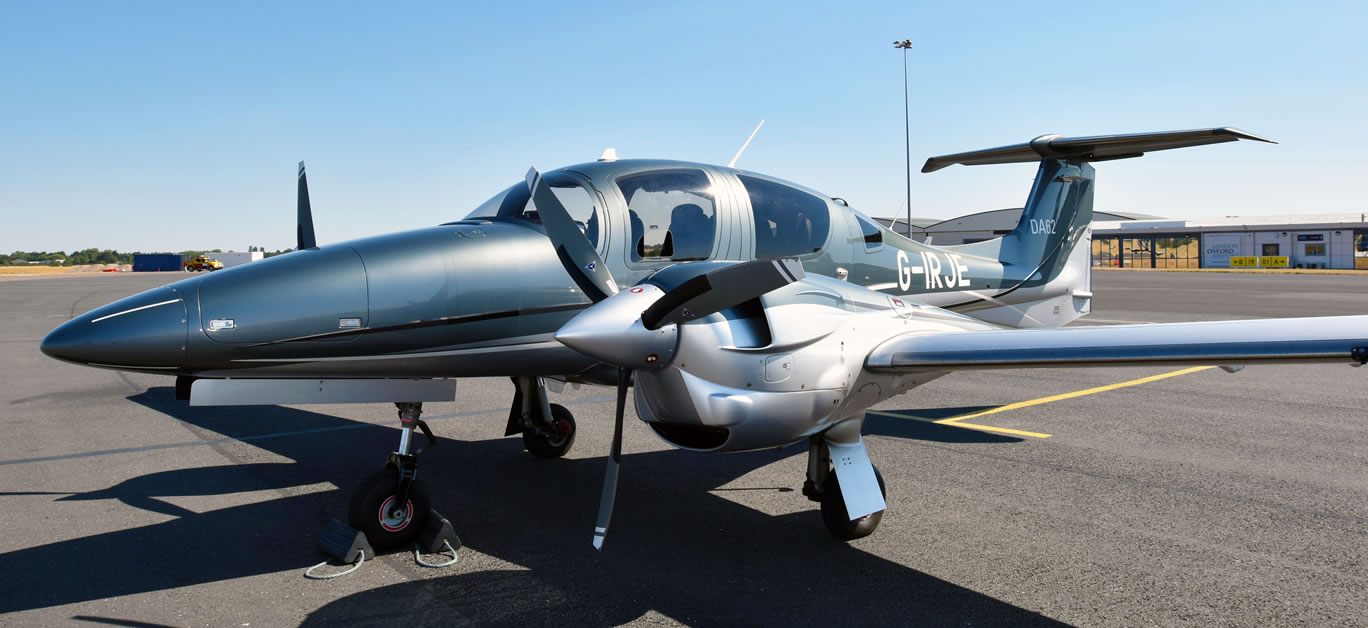LLM contributor Peter Sissons, writer and industrial designer, meets Henrik Burkal at Gemstone Aviation representing the luxury turbo-charged twin Diamond DA62 built by Diamond Aircraft. Here’s what Peter thinks about private aviation, the innovative company and the DA62 following their meeting and flight at London Oxford Airport.
It really is a no-brainer! Here are your choices. Buy a six-seater aircraft from one of the usual manufacturers, whose design can originate from the bygone age of the Ford Escort and the Vauxhall Viva. Or cement a massive grin on your face and pay your money for the ultimate flying machine – the seven-seat twin-engine Diamond DA62.
The what? And seven seats, you ask? Yep, it’s not a Cessna, Piper, nor Beechcraft with only room for six, but a modern work of art with seven seats that is hand-built in Austria and Canada by Diamond Aircraft – a company started in 1981, which has grown into the world’s third largest manufacturer of luxury turbo-charged prop aircraft.
Diamond’s design engineers threw out the established aircraft rulebook and built the company’s reputation on innovative design, superior airframes and cabin structures, and aerodynamics and fuel efficiencies. The design attributes continue with ease of use for both pilot and passenger, excellent cabin and seat comfort for all, and the jaw-dropping bonus of absolute beauty.
My enthusiasm could easily continue to gush forth about this aircraft company, however, I will finish my compliments with an essential part of Diamond’s design philosophy: ensuring they have one of the best safety track records in the industry. The company’s continuing and growing success results from over 1,200 employees and 130 independent servicing and distributor networks being incredibly proud of what they design, build and service with great care and attention.
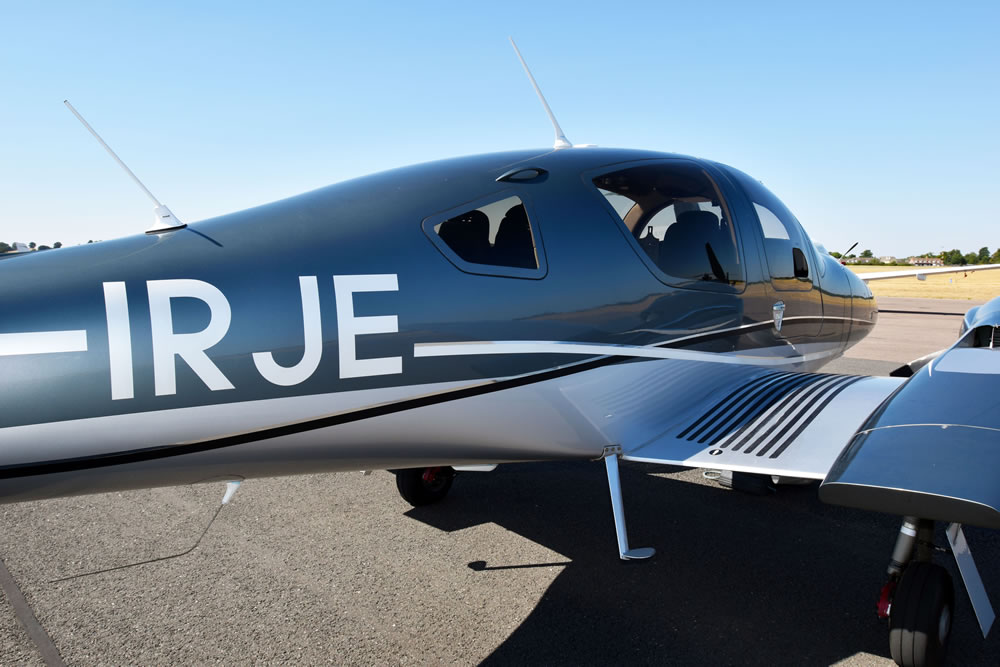
Recently, I met with Henrik Burkal at London Oxford Airport, where he arrived in his beautifully finished silver DA62. Henrik is the affable Danish managing director of Gemstone Aviation, the sole distributor in the UK and Ireland of Diamond’s new and used aircraft. (They have rock-solid resale values.) He is affectionally known as Mr Diamond, an accolade well-suited to an experienced pilot of fifty years and a businessman who knows every nook and cranny of Diamond Aircraft.
After chatting with Henrik and filling my notepad with facts and figures about his aircraft and the manufacturing company, he suggested we have a flight in his DA62. Mmm, it didn’t take me long to agree to that idea!
Besides being a writer, I am an industrial designer and always super critical about products, especially those of high value. Approaching the DA62 in blindingly hot and sparkling sunshine with my product designer hat on, the plane resembled a beautiful piece of smooth and sensuous sculpture, whose carbon-fibre form was immaculately polished, blemish-free, and without a curve out of place.
Having been invited to be Henrik’s co-pilot, I mounted the plane’s wing with little effort using the well-placed footrest and door handle. After opening and lifting the large, well-balanced, top-hinged door – a unique example of excellent ergonomics in luxury planes – I sank into the contoured, supportive leather seat. This action was somewhat refreshing compared to my usual sideways-shuffle performance, where I attempt to prise myself into a cockpit seat.
Another Diamond first? There are not just two lift-up doors but three, which fundamentally improve access into the plane for the other passengers. And forget about adjusting the seats – you can’t! Diamond designers put your safety first by permanently fixing them to the ultra-strong monocoque-cockpit safety shell. The production facilities have built this robust-lightweight construction to withstand damage resistance of 26G and 10G for flight. Just think of this – fighter pilots experience a maximum of 9G in a tight turn, so the DA62 has plenty of structural integrity in reserve.
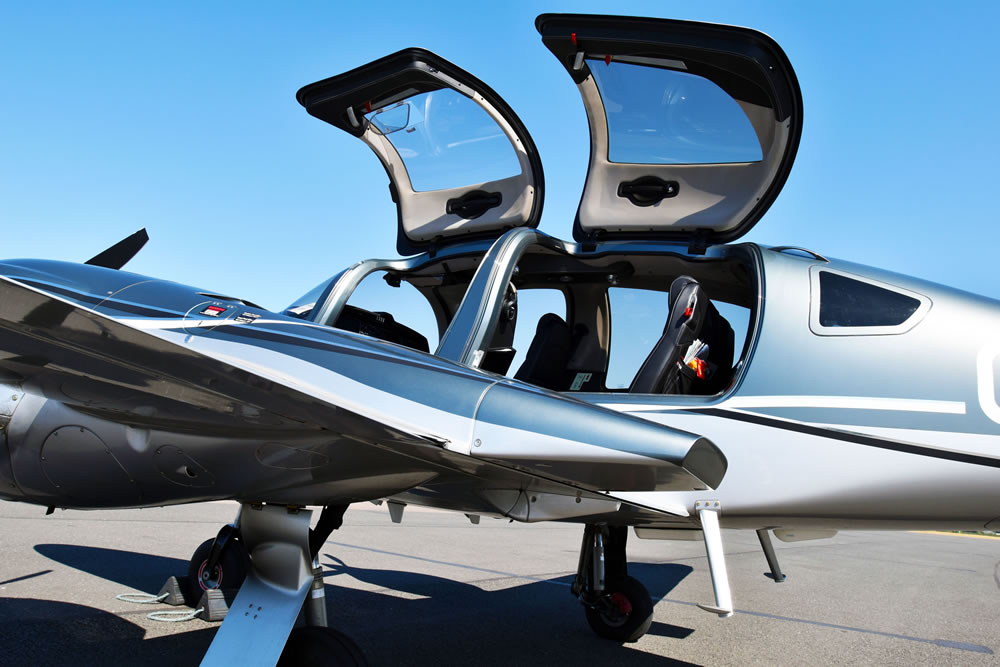
And how do you reach the rudder pedals? They are under your command, electronically adjusted for leg reach. I purposefully expanded my upper body to check the space around me and appreciated not rubbing shoulders with Henrik – a massive change from the usual intimate contact with my PPL instructor.
My eyes began soaking in the detail of the cabin, noting the high-quality finishes – especially the beautiful execution of leather stitching, something that even expensive, hand-built car manufacturers sometimes do not achieve. Looking to starboard, I stared at the gleaming silver cowling that hides the turbo-charged AE330 AUSTRO 2.0-litre diesel engines, developed by Austro Engine GmbH (based on a Mercedes engine), a company wholly owned by Diamond Aircraft.
Austro’s engineers have re-configured the DA62 twin power units to frugally perform on JET A1 fuel – which is 50% cheaper than Avgas! This innovation is an example of the company’s commitment to reducing energy consumption and implementing CCS – Carbon Capture and Storage – with increasing sustainability within their production facilities. For example, fly your DA62 at 75% power at 171 ktas and you can put a grin on your face knowing your wallet has only paid for 14.8 gph (US). Or, if you want to fritter away money, fly other well-known twins and you will probably gobble up nearly 50% more fuel.
And to further illustrate Diamond’s commitment to safety, the company installs stainless-steel fuel lines, exceeding the crash specification required for aircraft construction.
I settled in for the flight, watching Henrik running through his checklist when he reached to flip the aircraft’s systems master switch. The aircraft cockpit came alive with two large Garmin G1000NXi displays powered up in all their glory. Wow! It was my first time seeing all the flying instruments, maps, vital air corridors and airport information on the brightly lit screens. It was impressively comprehensive and straightforward to read – even for a rookie PPL student.
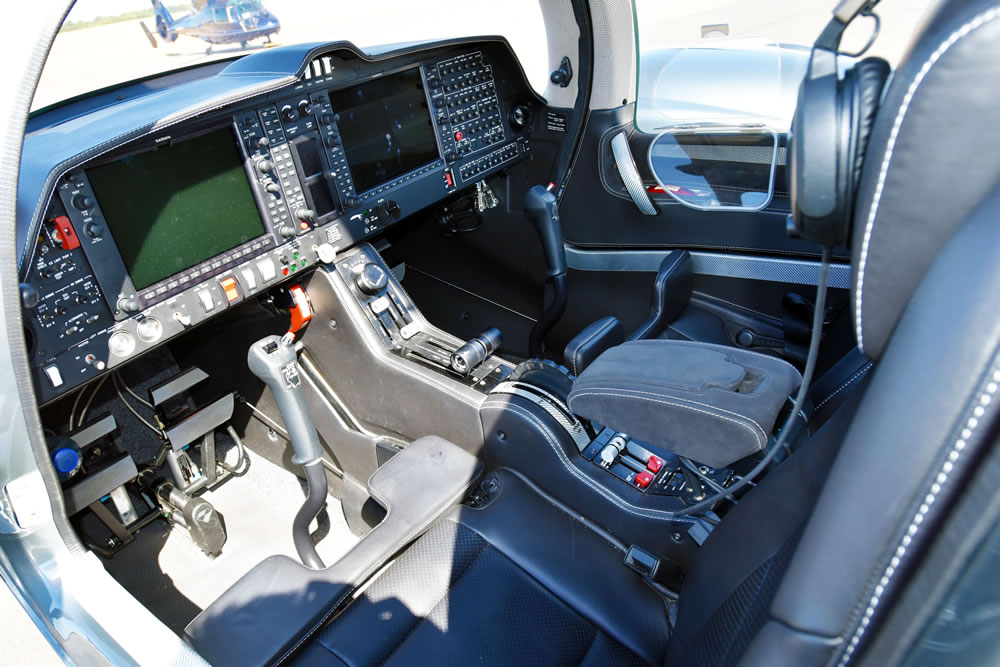
Next, Henrik turned on the port engine master switch. At this point, the analogy with starting a car began. Well, that’s how it appeared when he pressed the engine start button. The AUSTRO engine instantly came to life and, removing my headset, I heard another fantastic attribute of the DA62 – the engineers had sound-proofed the cabin so well that I could listen to Henrik talking. Try that with the typical noisy aircraft engine, let alone two! Once the engine vitals were green, Henrik flipped the starboard engine master switch and pressed the start button. Again, the AUSTRO immediately sprang into action. I tested the sound level again: I could still hear him talking!
I sat, wondering what was happening. Could starting a twin be this easy? Absolutely! From the engines’ start-up, the ECU control and aircraft systems software began working for its living by monitoring each power plant’s condition and automatically synchronising thrust from the three-blade constant speed propellors. And the result of this computer wizardry? Unbelievably, there is only one throttle per engine to operate, with the engines’ thrust shown as percentage power, allowing the pilot to enjoy flying the DA62 and not having the constant interruption of scanning the instruments and checking Ts and Ps, times two.
Before take-off, Henrik completed the plane’s full power checks by simply pushing the ECU buttons – without the throttle moving – causing the DA62’s software to check each engine’s condition before we set off for the runway. Our take-off run took up less than 450 metres (1,477 feet) of tarmac, with Henrik climbing the Diamond to 610 metres (2,000 feet) in 90 seconds.
We could have continued up to 6,096 metres (20,000 feet) with a generous amount of luggage in the front and rear holds, and a full complement of passengers. However, the flight was a brief low-level DA62 experience for me, which became even more exciting when Henrik let me have control – not using the typical American-style yoke, but a proper aeroplane joystick.
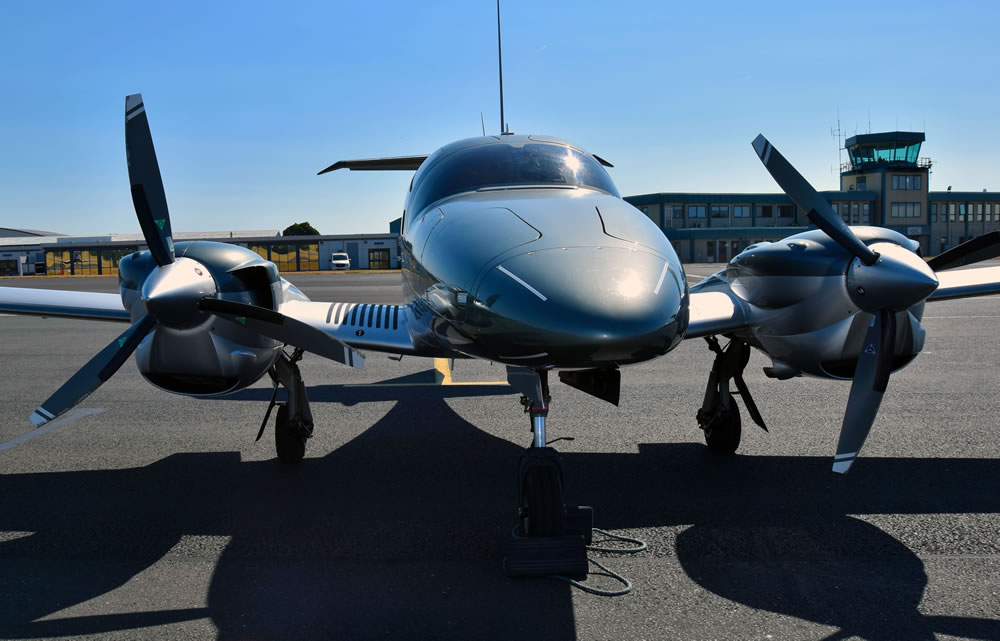
After getting permission from Henrik to do some steep power turns left and right, I absolutely loved the Diamond’s controls, especially the roll rate that got us from one side to the other in no time at all and with such precision – oh, it was such a great plane to fly!
Unfortunately, my flight was approaching it’s end when Henrik announced we had to head back. He specified that I had to stay at 518 metres (1700 feet) with a 75% power setting, and to fly my little icon aircraft along the line shown on the Garmin screen map. Again, this was a joy to do since I felt at one with the plane’s controls even after such a short introductory flight.
We touched down on the airport runway and as we made our way back to the terminal, I pondered over what I could possibly find wrong with this flying work of art. And then the reality of the situation struck me.
So, I must conclude this article by pointing out an unforgivable and disturbing aspect of Henrik’s Diamond DA62 – it isn’t mine (a big sigh).
Factbox
Henrik Burkal at Gemstone Aviation: gemstoneaviation.co.uk/diamond-aircraft-uk
Diamond Aircraft: diamondaircraft.com
All imagery supplied by Peter Sissons












